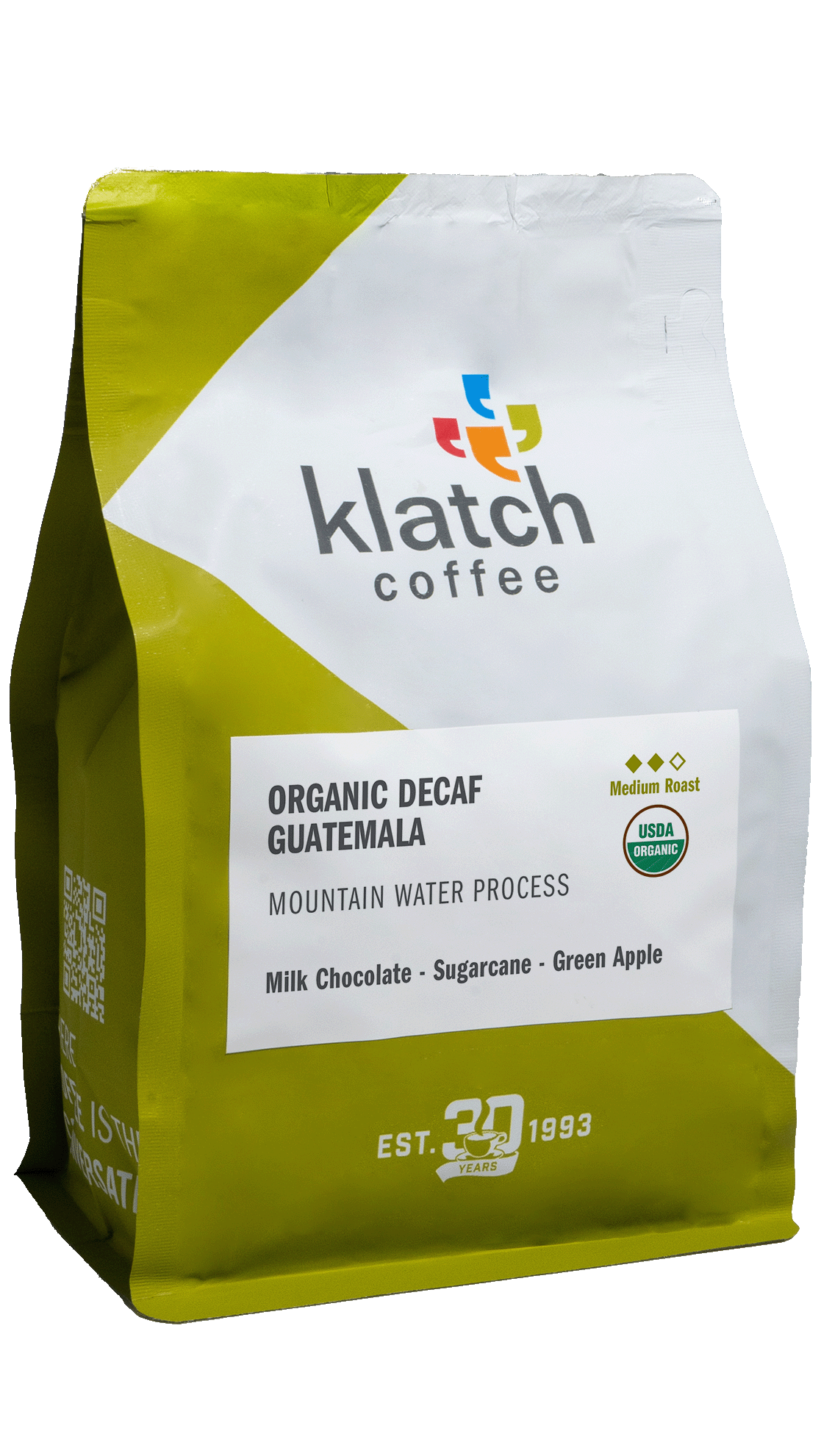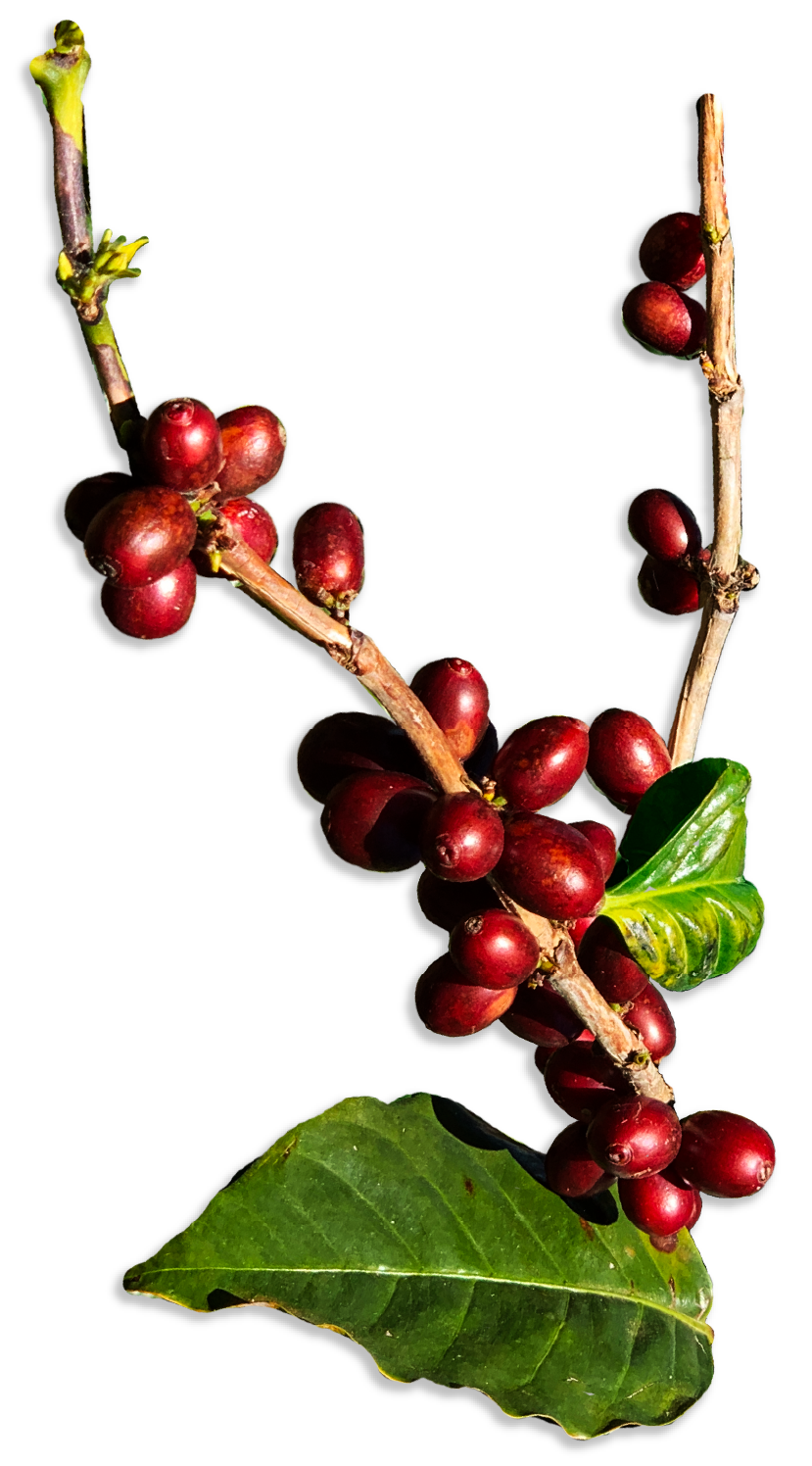


SIZE

310g

2lb

5lb
QUANTITY
1
GRIND

SIZE

310g

2lb

5lb
Enjoy our Organic Decaf Guatemala Mountain Water Process with flavors of sweet milk chocolate, sugarcane, green apple. This coffee offers mild juicy acidity, creamy body, with very clean cup.
Finca Santa Isabel has been owned by the Keller family since 1899. For the last twenty years, they have grown coffee using biodynamic, organic farming practices. The Kellers’ commitment to producing excellent coffee goes hand in hand with their dedication to the environment. Mountain Water Process coffees are decaffeinated using pure spring water from Pico de Orizaba, the highest mountain in Mexico. Each batch of beans is steamed to create a green coffee extract, which is passed through a filter to remove only the caffeine content, then re-introduced to the green coffee. This process retains all the flavor and nuance inherent to the green coffee while removing 99% of the naturally occuring caffeine, all without the use of chemical additives or solvents.
The Kellers’ entire coffee crop is shade grown, more than 1,500 short-haired sheep roam the land, grazing on weeds as a natural alternative to pesticides, and the farm practices biodynamic agriculture. Further, at the highest elevation of the property, a natural forest reserve is home to diverse species of plants and animals. In 2004, Santa Isabel’s coffee plants suffered from widespread disease. The Keller family decided that the only way to rejuvenate the farm was to implement organic agriculture techniques. The 2007-2008 harvest was the first season the farm went organic. In addition to these techniques, the farm also benefits from rich, volcanic soil and a microclimate that’s ideal for cultivating high-quality coffee.
Growing Coffee in Guatemala
Coffee farming practices are similar to other countries in the region, but Guatemala has an abundance of water, volcanic soil, and very distinct micro-climates compared to its neighbors. Although late to coffee, Guatemala recognized and responded to the needs of the emerging specialty coffee sector earlier than most coffee-producing regions. Anacafé, the coffee producers association in Guatemala, identifies seven growing regions: Fraijanes, the plateau south of Guatemala City; Coban, a rainforest region in the center of the country; Huehuetenango, highlands near the border with Mexico; Atitlan, primarily the volcanic mountains on the Pacific side of Lake Atitlan; San Marcos, between Huehuetenango and the Pacific Ocean; Oriente, the driest of the growing regions located near the eastern border with Honduras; and the most famous of all, Antigua, nestled among the volcanoes an hour’s drive southwest of Guatemala City.
History of Coffee in Guatemala
Although coffee was brought over from the Caribbean in the mid-18th century by Jesuit priests, it was used primarily as an ornamental plant and garden crop for 100 years in Guatemala. Coffee wasn’t widely traded, however, until commercial production began in the 1850s. The volcanic soil and various micro-climates proved ideal for growing coffee in Guatemala. Coffee, within a generation, became the country’s most important crop. In 1860, Guatemala exported 140,000 pounds of coffee, and just 25 years later, the country was exporting over 40 million pounds. Large numbers of coffee farmers were German immigrants responsible for many inventions and innovations related to coffee milling. Most of Guatemala’s coffee was exported to Germany until the First World War, when exports shifted to the United States.








